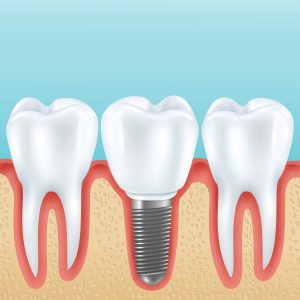When you notice food getting stuck in your teeth or see any pits or cavities. The first step is to visit a dentist for a filling. A dental filling is used to fill any cavity, or the hole happens due to the cavity.
These cavities result from caries (rotten or necrosed organic and organic substances of the tooth structure due to bacterial activity). On the first visit to the dentist, you might fill the cavity with a temporary tooth filling until a permanent treatment is done. Such fillings are temporary.
This article will guide you through temporary filling for teeth, longevity, and aftercare basics.
Table of Contents
What are the Temporary Dental Fillings?
Temporary dental fillings are less durable and seepage-proof restorations used by dentists to fill teeth. They are intermediates between procedures until a concrete permanent treatment is done. There are various types of temporary fillings, such as:
- Zinc Oxide Sulphate Cement—This temporary filling is used for 1 to 2 weeks. It has been made into a preformed paste and is ready to use.
- One-Component Materials – These materials are based on gypsum and resin. Examples are cavity, proximate, Litark, etc.
- Zinc Oxide Eugenol Materials – These are temporary Tooth fillings used for various indications. Zinc oxide eugenol cement is used to make impressions on edentulous patients temporarily. Zinc oxide eugenol paste can be used as a surgical dressing pack after periodontal surgeries. As a temporary luring material, and as root canal sealant in primary deciduous teeth. The temporary root canal tooth filling filler material is used in milk teeth because of its resorption properties.
- Zinc Oxide Phosphate Material – This can temporarily fix the crowns and the bridges.
- Light Cure Temporary Materials – These are the light, cute materials used to temporarily fix the porcelain veneers or crowns to get an insight into the final crowns after permanently fixing the prosthesis.
What are the Indications of Temporary Fillings?
The indications of temporary fillings are diverse and treatment-based. The following are the indications:
- Temporary filling can be used in deep cavities to ensure that direct filling will not result in pain or death of pulp tissue.
- While making any fixed prosthesis, temporary fillings are used to make temporary crowns, keeping the adjacent teeth in place and preventing them from shifting. This ensures that the final prosthesis fits appropriately.
- The temporary filling is commonly used by cosmetic dentist. It is used to temporarily fix temporary crowns
- After the crown preparation is done. Furthermore, these fillings are used to try on permanent crowns, enabling the dentist to make any changes that are needed in the final crowns.
Temporary Filling Procedure and Aftercare
The dentist will usually clean the area or the cavity where the filling needs to be done. The temporary filling is done after the cavity is made caries-free and canals are cleared of all dead tissue and pus.
For filling the cavity, in the case of powder-liquid temporary filling, both are mixed in the recommended proportion. In the case of preformed and one-component fillings, the temperature is scooped out using a carrier instrument and plugged into the cavity.For the root canal, a temporary tooth filling is delivered into the canal using the long, thin tips. The filling is pushed out of the tube into the canal, and the excess material is wiped out and cleaned.
After the filling, it is advised not to eat or drink for a few minutes until the filling is completely set. You are also asked to follow a soft diet for days and be vigilant of breaking or dislodging this filling until a permanent treatment is done.
How Durable is the Temporary Dental Filling?
While temporary fillings are a savior in all dental procedures, they are not meant to stay put for long. Their strength is very low, and they can stay put only for a few days to two weeks. The filling might remain intact in small cavities; these fillings don’t stay longer in bigger cavities.
You are often advised to take a soft diet after this filing is done. Since these fillings are intended to replace them with permanent fillings, they are not technique-sensitive and are removed easily whenever needed.
Conclusion
A temporary filling is an excellent way to protect the tooth from further damage until help arrives in the form of a permanent solution. Since these fillings are not long-lasting, seek proper treatment from the dentist, as this can lead to deteriorating the initial situation of your tooth.
Secure Your Oral Health at Anoka Dental!
If you’re experiencing dental issues and need a temporary tooth filling, schedule your appointment with our expert team at Anoka Dental today.
Let us provide the best dental solutions to ensure your teeth stay healthy and protected.
Don’t wait – call (763) 421-40 and take the first step towards a brighter smile!




